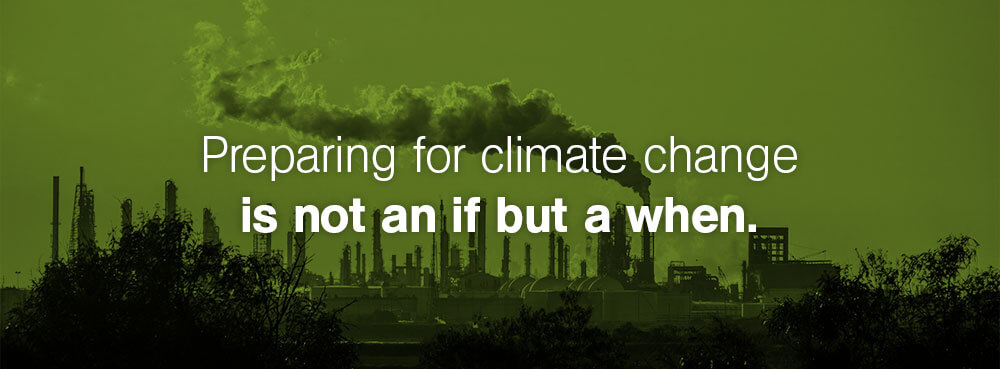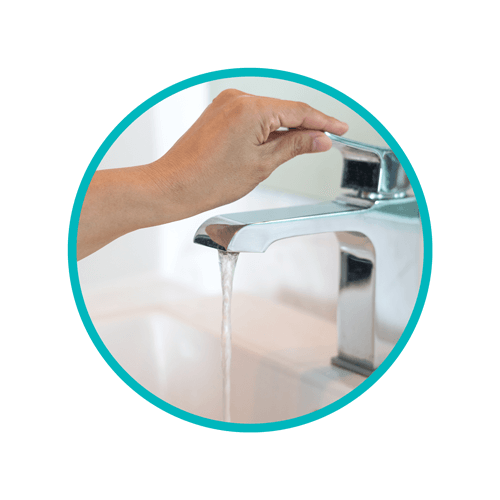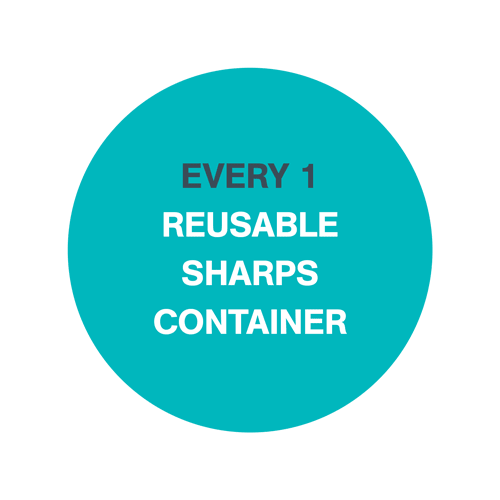6 Tips to Drive Sustainable Improvements in Your Healthcare Facility

When it comes to sustainability, healthcare facilities have a long way to go. According to the Canadian Coalition for Green Health Care, hospitals produced 3.355 metric tonnes of waste per bed, and the average facility consumed 2.5 GJ/m2/year (a measure of how much energy is consumed each month over a full year). With climate change at the forefront of global issues at the moment, now is the time for healthcare facilities to make a shift to adopt a more sustainable way of operating. With this in mind, here are a few of the ways that hospitals and other healthcare facilities can improve their operations to improve sustainability and reduce their carbon footprint.
TOPICS WE WILL COVER:
1 / Invest in Reduced Energy Consumption
4 / Create a Sustainable Supply Chain
5 / Improve Your Inventory Management
6 / Rethink Waste Generation and Management
Invest in Reduced Energy Consumption
One of the first steps to improving sustainability in healthcare is to improve facilities' energy efficiency. This takes both the form of evaluating usage, reducing consumption, and investing in renewable energy. A good way to start is by looking at the building itself.
Are walls properly insulated and windows and doors properly sealed to prevent air leaks? Due to high foot traffic, automatic doors can help to manage airflow, and including large windows can allow natural light and warmth in.
Other changes, such as energy-efficient LED lighting, motion sensors, and ceiling fans, can help to reduce unnecessary energy consumption without reducing utility. Alternative energy sources can help to reduce carbon emissions, and though a significant part of this depends upon the availability of resources and the local energy mix, onsite renewable energy such as solar panels can help to reduce dependence on the grid.
Investments such as these can be costly up front, but they will definitely reduce costs in the long-term. Often before attempting to implement changes such as these, it helps to begin with a cost-benefit analysis and determine how quickly these changes can pay for themselves. Often this is far quicker than most people realize.
Conserve Water
In addition to energy use, healthcare facilities are often very water intensive. These facilities use water in cooling equipment, building operations, and hospital processes. However, amenities, including plumbing fixtures and restrooms, can consume the largest share. There are many steps that can be taken to help conserve water, including:
- Updating restrooms with low-flow toilets, faucet aerators, and low-flow shower heads.
- Replace outdated boilers and cooling systems with more efficient modern HVAC systems.
- Examine existing pipes and plumbing fixtures for leaks.
-
Incorporate strategies to reuse less harmful grey water in certain functions such as toilets.
In many cases, these strategies can, similarly to energy-efficient upgrades, pay off their initial investment within a few years' time. It is important to keep in mind that water conservation often not only helps to reduce water utility and sewage costs but also energy costs such as water heating.
Reduce Paper Waste
Hospitals have begun to incorporate electronic forms and signatures in many areas, but the fact is that there still are an overwhelming number of charts, admissions and discharge forms, prescription writs, patient instructions, and countless other documents all written on paper. More often than not, this usage is unnecessary and could be recorded and communicated electronically.
To reduce some of this waste, make sure to perform all everyday paperwork electronically. Hospitals can record patient consent forms and insurance information on medical tablets and have patients sign digitally. Additionally, they can send instructions to patients' email inboxes and easily and securely store records digitally.
Hospitals will need paper documentation, in some cases, due to legal restrictions, but even then, hospitals can reduce paper waste through recycling. It is important to look into shredding companies that can both securely shred documents to prevent theft of sensitive information and recycle the paper to keep it out of landfills.
Create a Sustainable Supply Chain
Healthcare facilities rely on a long and complex list of goods, and they must have a reliable supply chain to keep needed supplies on their shelves. How can this be reconciled with sustainability practices? Creating a sustainable supply chain starts with sourcing locally. Turning to local suppliers can cut back on long-distance shipping needs and their large carbon footprint. Transportation burns a great deal of fuel and creates incidental waste that adds up to a huge climate impact. Eliminating unnecessary transportation in the supply chain and turning to local suppliers can make a big difference.
Not everything can be sourced locally since hospitals and doctors' offices are always ordering a wide variety of medications, medical equipment, food and beverages, sanitary products, and more. When unable to source supplies locally, administrators can still take many steps to reduce their environmental impact. Combining many shipments to minimise the number of trips and, therefore, fuel usage is one way to cut back. Also, carefully order the correct supplies and quantities you need, so you will waste or return fewer supplies.
Improve Your Inventory Management
This leads to the next way to introduce greater sustainability to the medical supply chain: better inventory management. Tracking assets in real-time allows for more efficient usage and less waste of supplies. Investing in a strong inventory management system that offers constantly updated supply info can save money and strengthen sustainability practices. Consider utilising modern technology, such as tablets with barcode scanners and RFID readers, for scanning goods into the system upon arrival and out of the system after use. Keep an accurate, real-time database of what is in stock and what your facility is using to help employees. This will enable correct and timely orders that minimise waste.
Rethink Waste Generation and Management
Waste is no small issue for healthcare facilities looking to improve their sustainability practices. Hospitals alone generate five million tons of waste per year. However, these facilities can curb unnecessary waste before it happens and dispose of it in the greenest way possible by using environmentally friendly waste management strategies. Consider looking into the following areas to improve waste management practices.
Ways To Improve Waste Management Practices
Your healthcare facility probably already prioritises proper sorting and separating of waste types, such as sharps, toxic material, etc. This helps reduce injuries, prevent contamination incidents, and allow for more efficient recycling. Proper sorting also reduces the volume and costs of specialised disposal.
But that’s just the beginning of sustainable solutions for your facility’s waste management. Daniels Health has made sustainability a core part of our waste collection and disposal services. One of the main parts of this initiative is helping healthcare facilities implement more sustainable waste management solutions.
For example, our reusable biomedical waste containers reduce the number of disposal containers sent to landfills and can be a cost-saving measure. These leak-proof, tamper-proof containers dramatically reduce the infection transfer risk while reducing medical waste mass and volume.
Sharpsmart, another Daniels product, is the first reusable sharps container solution designed to protect against needlestick injuries and infection risk at the same time it drastically reduces the environmental impact of sharps collection. Just this change alone can cut disposal costs, lower emissions associated with the process, and reduce the use of single-use plastics. Because of its unique design, Sharpsmart allows sharps to stack neatly inside the container, cutting down the times it needs to be emptied and lowering the risk of sharps injuries.
These are just a few of the reusable biomedical waste containers that form the cornerstone of Daniels Health's sustainable waste management solutions. Implementing a waste management system that emphasises green purchases, including reusable disposal containers, is a great step towards becoming a greener facility in every way.
Healthcare facilities should reconsider the ways waste is being disposed of, even after it leaves the facility. Attempt to reduce the amount of waste flowing into landfills and incinerators. Infectious waste disposal can have a large footprint, so compare autoclaving, microwave sanitation, thermal disinfection, and other methods for their use and efficiency. Reach out to Daniels for guidance in how to best implement suitable eco-friendly waste disposal methods for your facility’s specific needs.
Conclusion
Preparing for climate change is not an if but a when. Canada is taking action to reduce environmental impacts with the goal of becoming net-zero in greenhouse gas emissions by 2050. Now is the time for healthcare facilities to make the changes that will provide lasting benefits while keeping up with the country’s sustainability measures. Reduce and reuse are keywords, not just for individuals but even for large facilities looking to improve. Cutting back on major utility usage and choosing greener, reusable options wherever possible are eco-friendly choices that will reduce emissions, slash waste disposal costs, and pave the way for a more sustainable future.
